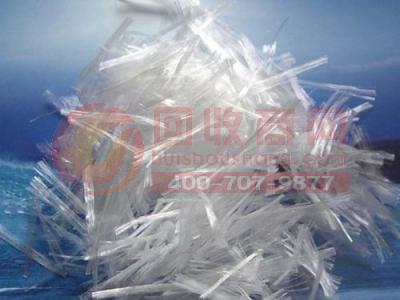
As people's living standards improve, the consumption of cars, clothes and home textiles continues to increase. According to reports, the British each spend about 600 pounds on clothes each year, and the clothes discarded are 400 pounds. In Japan, nearly 1 million tons of clothing is thrown away as garbage every year, and only 10% is reused. China is a world-famous textile country. The amount of textile fiber consumed every year is staggering. Most textiles will become waste textiles in a few years. According to statistics, 99% of textiles can be recycled.
Traditional methods of recycling used textiles are mainly incineration and landfill, but the decomposition of synthetic fibers represented by polyester, acrylic and polypropylene is very slow, and burying in the soil can damage the growth of plants and waste materials. The conversion of chemical fibers with higher calorific value in waste textiles into heat for thermal power generation is suitable for waste textiles that cannot be recycled, but toxic substances are released during incineration, causing environmental pollution. .
Reuse after chemical degradation
The chemical degradation recovery method is a method that can realize material recycling. It depolymerizes high-molecular polymers in waste textiles at high temperatures to obtain monomers or oligomers, and then uses these monomers to re-create new chemical fibers. For high molecular polymers synthesized by polycondensation, such as polyester fibers and nylon fibers, a depolymerizing agent is added during the degradation process. Olefinic polymers, such as polyethylene, polypropylene, polystyrene, etc., require degradation under a reducing gas atmosphere. At present, the method has achieved large-scale production in the recycling and recycling of some high-value chemical polymer materials.
New features after chemical modification
In addition to the product structure and performance of the waste textiles, the polymer structure and properties of the fiber raw materials have not changed fundamentally. Therefore, recycling of waste textiles can be achieved by chemical modification. This method realizes the functional change of waste textiles by chemical methods such as graft modification, crosslinking, and hydrolysis. For example, the waste acrylic fiber which generates cyanide during combustion can be changed from an easily electrostatic material to a water-absorbent material by hydrolysis. Waste acrylic fiber hydrolysate has a wide range of applications, which can be used as binders, printing and dyeing auxiliaries, soil conditioners and water-absorbing materials for agricultural production and urban vertical greening, mud treatment agents for oil fields, polymer scale inhibitors, etc. It is used in the fields of preparation of ion fiber and new functional materials.
New face after physical reorganization
In addition to the wear and tear of some fibers in the waste textile, most of the fibers still maintain good performance, so the waste fiber can be recycled by the non-woven forming technology. By mechanical treatment such as shearing and tearing, the knitted fabric and the woven fabric can be changed from a fabric to a short fiber, and then formed into a fiber web by mechanical carding or air-laid method, and then needled, hot-rolled or spunlaced. The method can be used as a non-woven material with functions of sound absorption, sound insulation, heat insulation and warmth, as a filling material, automobile sound absorbing materials and carpets, geotechnical materials, building materials such as insulating sheets, roof linoleum, and low-grade blankets. . It can also be used as a home decoration material, car door panels and body panels by impregnation with resin.
The non-woven forming technology is versatile, flexible and can be combined and applied, and has strong adaptability to various fibers. At the same time, nonwoven materials made from a mixture of different fibers have more complex porosity and curved passages, exhibiting better sound absorption and warmth retention. Therefore, non-woven technology has broad development prospects in the recycling of waste fibers. Freudenberg, the world's largest producer of nonwovens and coils, began recycling polyester-processed nonwovens in the late 1990s, adding 5% to 10% of the original polyester fiber. It becomes a 100% waste polyester fiber thick non-woven fabric.
EU law requires that the recycling rate of automotive materials should reach 95% by 2015, so recyclability is the development trend of textile materials. China's "Twelfth Five-Year Plan for Textile Industry" also requires the establishment of a recycling system for textile recycling and recycling, the formulation of relevant laws and standards, and the establishment of textile recycling and recycling management in accordance with the concept of "reduction, reuse, and resource utilization". Monitoring system. We can also learn from Western countries' experience in recycling waste fibers. For example, the United States federal government, carpet manufacturers and carpet and wiping associations jointly funded the establishment of the CaRE organization (American Carpet Recycling Organization), including the federal government as a director. , through the negotiation of shareholders to develop recycling targets. France has an EcoTLC organization to fund technological innovation, market development and cost reduction in the recycling of used clothing. In short, with the support of national policies and the lack of resources, the recycling of waste fibers will become a hot spot of concern.
Double Screwdriver Bit,Double Ended Screwdriver,Security Screwdriver Set,Double End Screwdriver Bit
henan horn tools co.,ltd. , https://www.hornhandtools.com
![<?echo $_SERVER['SERVER_NAME'];?>](/template/twentyseventeen/skin/images/header.jpg)